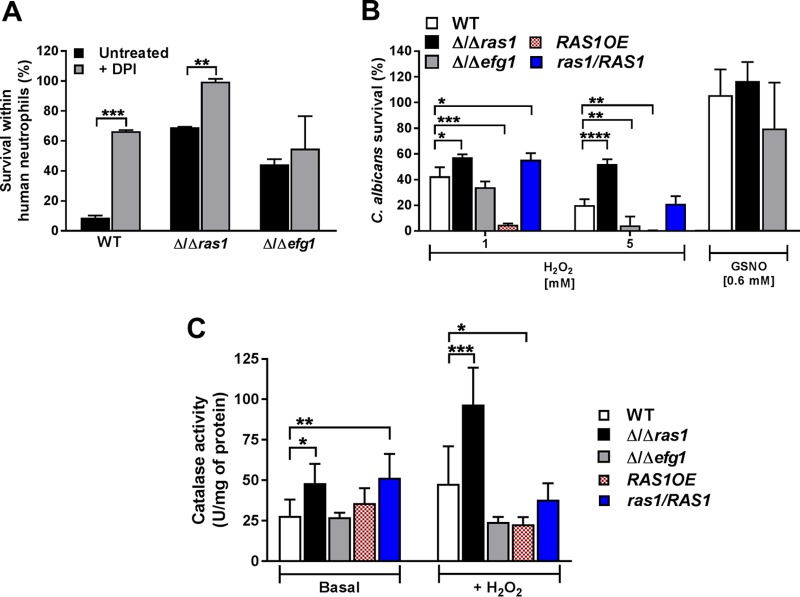FIG 5.
C. albicans Δ/Δras1 increased resistance to oxidative stress. (A) Human blood-derived neutrophils were treated with diphenyleneiodonium chloride (DPI) for 15 min at 37°C, followed by infection with C. albicans WT, Δ/Δras1, or Δ/Δefg1 strains for 3 h. H-PMNs were lysed and internalized C. albicans cells were released, collected, and plated on agar for 48 h to obtain CFU. Survival was calculated as follows: (recovered C. albicans CFU after H-PMN lysis/total number of phagocytosed C. albicans cells) × 100. Shown are the means ± SDs from three independent experiments performed in duplicate. (B) C. albicans strains were treated with the indicated concentrations of H2O2 or S-nitrosoglutathione (GSNO) for 2 h at 30°C. Control cells were left untreated. After incubation, C. albicans cells were diluted and plated on agar, and CFU were obtained after 48 h. Survival was calculated as follows: (CFU of treated plate/CFU control plate) × 100. Shown are the means ± SDs from three independent experiments performed in duplicate. (C) Catalase activity was measured colorimetrically at 570 nm using whole-cell extracts isolated from mid-log-phase cells incubated for 1 h at 30°C without (basal) or with 5 mM H2O2. Shown are means ± SDs from three independent experiments performed in duplicate. Significance was calculated using unpaired Student t tests (A) or one-way ANOVA with post hoc Dunnett’s multiple-comparison tests (B and C). *, P < 0.05; **, P < 0.01; ***, P < 0.001; ****, P < 0.0001.

